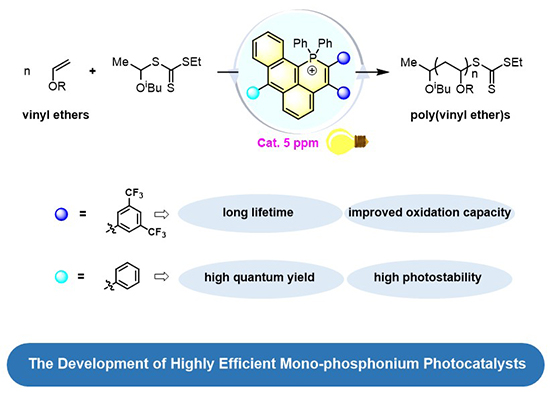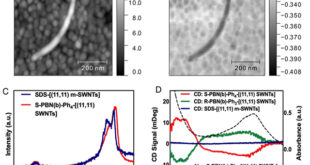Significance
Polymerization is a process where monomers, are chemically bonded together to form a larger molecule called a polymer. This process is commonly used in the creation of plastics, synthetic fibers, and other materials that have a wide range of industrial and commercial applications. Photocatalysts are an important class of materials in chemistry that can accelerate chemical reactions by absorbing light energy and initiating photochemical reactions. These materials have found widespread use in a variety of industrial and environmental applications, including water purification, air treatment, energy conversion, and more. Photocatalysts work by absorbing light energy and using that energy to excite electrons to higher energy levels. These excited electrons can then react with other molecules to initiate chemical reactions that would otherwise require high temperatures or pressures. The photocatalysts are classified on basis of metallic or organic nature. The use of expensive metal photocatalysts in polymer synthesis has been a longstanding issue. These metal residues can significantly impede the downstream uses of polymer material in metal-sensitive applications, making it not-economical. To address this issue, organic photocatalysts have been proposed as an ideal solution for establishing a metal-free process. The use of organic photocatalysts in polymerization offers several advantages over traditional polymerization methods. For example, photocatalysts can be used to initiate polymerization reactions under mild conditions, such as at room temperature and atmospheric pressure, which can reduce energy costs and increase efficiency. Additionally, organic photocatalysts can be used to selectively initiate polymerization reactions at specific sites on a molecule, which can lead to the creation of complex and highly tailored polymer structures. Recent progress in organocatalytic visible light-regulated polymerization has been promising and strategies have been developed to meet this ambition, including reversible deactivation radical polymerization, living cationic polymerization, and ring-opening polymerization.
In a new study published in Journal Polymer Chemistry, Professor Saihu Liao and his colleagues from Fuzhou University and Xiamen University developed monophosphonium photocatalysts by combining phosphines and alkynes, which are efficient at promoting organic photoredox reactions for the polymerization of vinyl ethers using visible light. The reaction required low catalyst loading, between 5 to 20 ppm, and does not involve metals. As a result, well-defined poly(vinyl ether)s with predictable molecular weight and narrow dispersity can be produced in a short time. Furthermore, the photocatalysts enable temporal control over the chain-growth by light, and researchers are establishing a link between the catalysts’ structure and catalytic performance. Overall, this new class of photocatalysts has the potential to produce high-quality polymers with better control over their molecular properties.
The research team outlined a synthetic pathway to produce phosphonium-doped benzo-anthanthrenes salts using anthracene-derived phosphines and alkynes. The addition of diphenylphosphine and aryl substituents prevented bimolecular reactions of anthracenes during the process. The synthesis included the Suzuki couplings, bromination, halogen-lithium exchange, and a copper-mediated C-H bond activation. The resulting monophosphonium salts were used as photocatalysts and analyzed for their photophysical and electrochemical properties. The authors provided a novel method for synthesizing these important compounds and evaluated their potential for use in photocatalytic reactions.
The researchers investigated the catalytic activity of five photo-catalysts (PC), namely PC 5aa, PC 5ba, PC 5ab, PC 5ca, and PC 5ac, in a polymerization reaction and found that catalyst 5ac had the highest activity and fastest polymerization rate, which features a longer excited-state lifetime and high quantum yield. A single electron transfer process between the excited photocatalyst and chain-transfer agent was observed, and the decay rate of 5ac’s fluorescence lifetime was found to be faster than the other four catalysts. Moreover, a temporal control of the polymerization reaction was realized through alternating on and off cycles of light. The conversion was observed only during the on cycle of light and no monomer conversion took place during dark periods. The findings provide insights into factors affecting photocatalytic activity and demonstrate the ability to achieve temporal control of polymerization reactions using light. They concluded that both the excited-state lifetime and quantum yield are contributory factors to improving the effectiveness of photocatalyst.
In conclusion, the authors developed a new family of organic photocatalysts based on phosphonium-doped benzo-anthanthrenes (PC 5ac) for polymerization of vinyl ethers. A series of test experiments were conducted on the newly prepared catalyst material which revealed that for the polymerization of vinyl ethers PC 5ac provided control on molecular weight and narrow dispersity at a relatively lower level of catalyst loading. In addition to that PC 5ac was found to have a greater conversion rate as compared to other catalysts. These excellent properties exhibited by monophosphonium photocatalysts are a significant contribution to the field of polymer engineering as the proposed approach holds potential to produce high-quality polymers with enough control over their molecular properties and make it possible to manufacture the polymers based on their intended applications.

Reference
Jianxu Chen, Junqiang Lin, Zan Yang, Yi Wub and Saihu Liao. The development of highly efficient monophosphonium photocatalysts for the visible light-regulated metal-free cationic polymerization of vinyl ethers. Polym. Chem, 2023, 14, 486–491
 Advances in Engineering Advances in Engineering features breaking research judged by Advances in Engineering advisory team to be of key importance in the Engineering field. Papers are selected from over 10,000 published each week from most peer reviewed journals.
Advances in Engineering Advances in Engineering features breaking research judged by Advances in Engineering advisory team to be of key importance in the Engineering field. Papers are selected from over 10,000 published each week from most peer reviewed journals.


